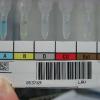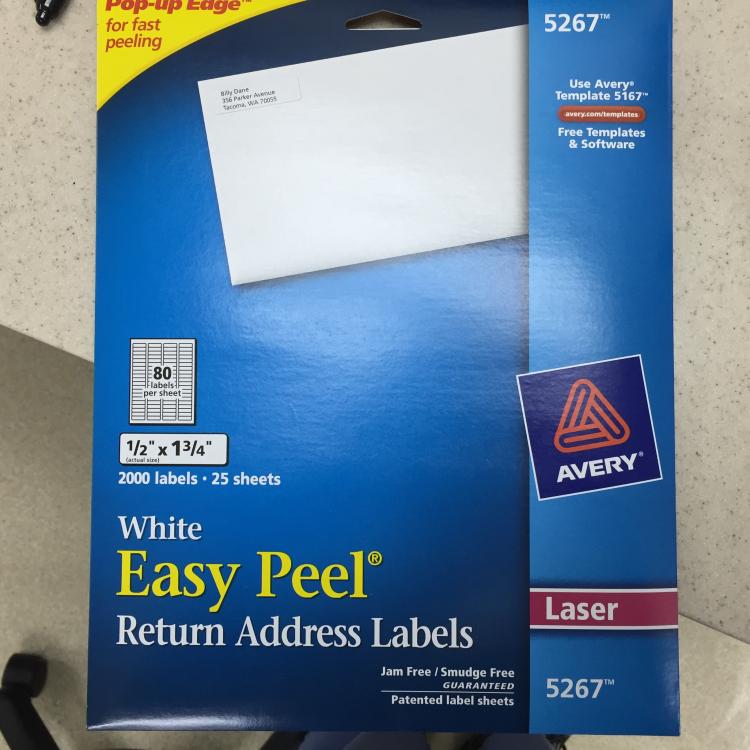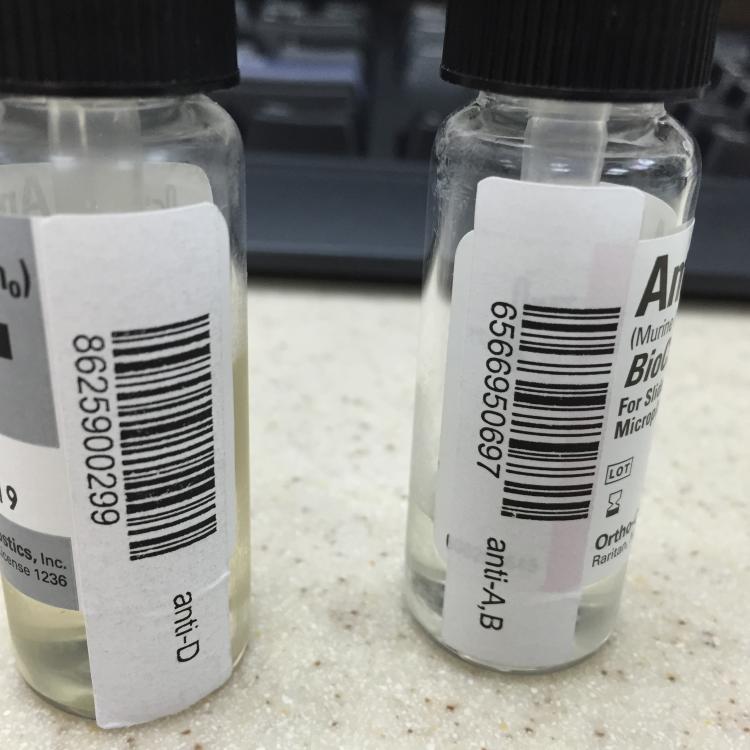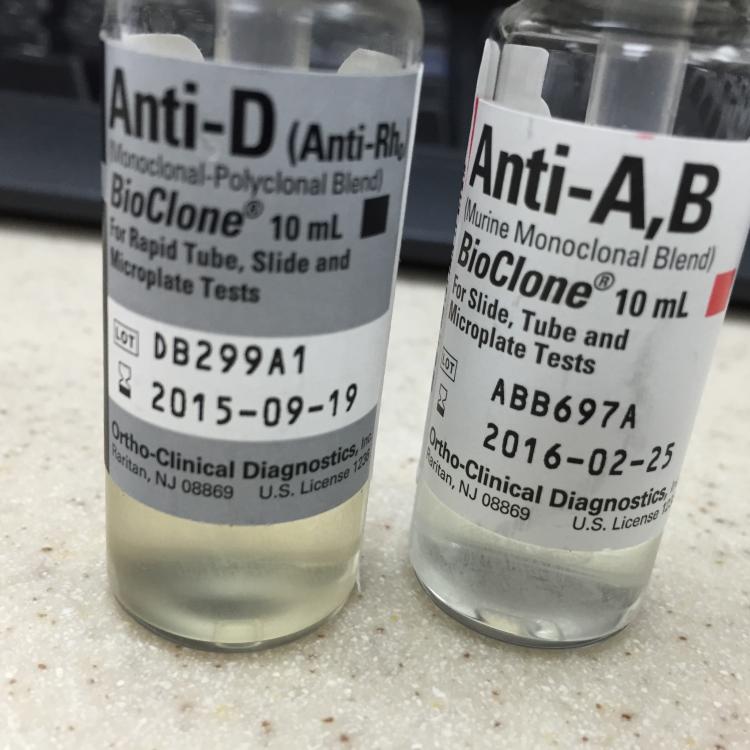Content Type
Store
Profiles
Forums
Blogs
Events
Frequently Asked Questions
Gallery
Downloads
Glossary
Links Directory
Questions
Jobs
Vendors
Posts posted by Dansket
-
-
19 minutes ago, SMILLER said:
Side note question: We have been dating our thawed plasma for expiration exactly 5 days (120 hours) after thawing. AABB standards indeed use the term "5 days". We did not realize that they would be usable up to midnight on the fifth day. Does this sound correct? Can someone confirm this?
Thanks, Scott
Yes. Our 5-Day plasma expires at 2359 on fifth day after thawing regardless of the time thawed.
-
On 10/19/2016 at 3:46 PM, Mabel Adams said:On 10/19/2016 at 3:46 PM, Mabel Adams said:
Is this codabar or 3of 9 or does it matter?
Is this codabar or 3of 9 or does it matter?
It's Code 128. The barcode has to be small to fit on label.
-
9 minutes ago, cswickard said:
EXCEPT - for cord bloods - they ALWAYS have to be washed at least 3 times! I was just doing one and noticed that we forgot to mention them as the exception to the "rules" being discussed here.
For adults - I do not wash - just make a 3% suspension in PBS from 1 drop of packed cells. I always do tell my students that if they use too many drops of packed cells, they should wash 1 time at least.
For cord bloods, I make a 3% suspension and then drip that out to the test tubes (1 drop each) and then let the cell washer wash the those tubes 4 times. Very easy. (But it always requires telling the students that they must not wash the 3% suspension directly in the cell washer!!!)
I stopped "washing cord blood samples 3 times" over 20 years ago. Routine washing of cord blood red cells is a "solution" looking for a problem. If you have documented evidence in your facility that unwashed cord red cells produce a high incidence of false-positive test results, then wash, wash, wash. Otherwise, I would wash cord red cells only when a discrepancy is detected (positive Rh control test).
- tbostock and Malcolm Needs
-
 2
2
-
Yes, we do.
We are a small facility that has standardized collection of blood samples for pretransfusion compatibility testing. All blood component requests require that a Type and Screen blood sample be collected within 3 days of the intended date of transfusion. We also use the TYPENEX Blood-Recipient Identification System.
-
-
2 hours ago, Marianne said:
They presented 4 webinars on10-7-16. They did say they would eventually get posted to Success.
The one that had this topic was "Ask The Expers: Quesiton and Answer with Blood Bank Inspector"s. They had resp from CLIA, CAP and AABB. The CLIA person stated this and cited CLIA interpretive guideline 42 CFR 494.1271(a)(1), saying that using expired reagents is not following manufacturer's instructions and thus an LDT.
So, it that just one single CLIA person's opinion? Individual inspectors vary as to their personal interpretations within CLIA, CAP and AABB!
-
On 9/18/2016 at 6:46 PM, Mabel Adams said:
Would you mind sharing your procedure? I don't suppose you have found a way to automate it on one of Ortho's machines, have you? I keep thinking we could jury-rig about any test if we call it a crossmatch.

The other approach is to label reagent vials with a provue-readable bar code for either AG-IAT or AG-IS. Labeled vials are then placed in the reagent carousel. I user Avery 5267 address labels.
-
We will rule out C and E in the presence of anti-D with a single C+c+ or E+e+ cell. K may be also ruled out with a single K+k+ cell.
- Malcolm Needs, SMILLER, Ensis01 and 1 other
-
 4
4
-
Yes, Nursing orders the Post-partum RhoGAM protocol on mothers known to be Rh negative (according to prenatal records) as well as mothers whose Rh type is not known. ER orders Antepartum RhoGAM protocol on females known or suspected of being pregnant.
-
In our facility, Nursing orders either the Post-partum RhoGAM protocol on the mother with the Cord Blood Workup on the newborn or the Ante-partum RhoGAM protocol. After completion of appropriate testing, Blood Bank automatically assigns RhoGAM syringe to mother (if indicated) and notifies Nursing the mother is candidate and RhoGAM syringe is ready for injection. This is a one step process for Nursing.
-
Are you creating a new product in your Meditech aliquot routine? Example: RBC>RBCaliquot or RBC>RBC (with reduced volume)? I believe Meditech will add a letter to the DIN to differentiate between the two components when you RBC>RBC (with reduced volume).
-
As neither anti-A and anti-B were detected by tube or gel in the patient's plasma and the patient's red cell genotype is AB, what is the appropriate blood group to select for transfusion?
-
As you know a "call box" can be created in the LIS Canned Text dictionary and its mnemonic can be entered as a "Result Comment" for T type tests in the BBK Test dictionary. Unfortunately, the BBK test "ABS" is unique (not a T test) and cannot be configured with a Result comment. I believe one option is to contact the Iactic company (iatric.com) and request a quote from their Report Writing service. Expect the cost to be => $1000. They can do some amazing things in Meditech. Or you can do what goodchild and I have done by reflexing an Order group.
-
-
Our ProVue is not interfaced to LIS. We print ProVue 'Results by Sample' reports and then manually key results from report into Meditech. I believe that these reports can be considered "instrument printouts". What length of time should "instrument printouts" be retained. We are not AABB/CAP accredited.
-
We remove a donor unit number label from back of bag and affix to base of donor tubing inlet on the front of the bag. This visually identifies that unit ABO/Rh has been serologically confirmed (in case of Meditech downtime).
In Meditech C/S 5.nn, crossmatch results (serologic or electronic) cannot be entered on a unit if ABO/Rh serological confirmation test results have not been saved and filed.
-
We use Alba QChek controls for ProVue.
Alba Q-Chek Simulated Whole Blood Controls comprises of a set of 4 x 6mL whole blood samples. Sample A is a pool of Group A Rh Negative (rr) and contains anti-B and anti-D. Sample B is a pool of Group 0 Rh Positive (RIR1) and contains anti-A, anti-B and anti-c. Sample C is a pool of Group B Rh Positive (Rlr) and contains anti-A. Sample D is a pool of Group A2B Rh Positive and contains no other antibodies.
We use all 4 samples to perform Daily QC on the A/B/D Monoclonal and Reverse Grouping card, Anti-IgG Gel card, Buffered Gel card and the A/B/D Monoclonal Grouping card on ProVue.
-
I'm using Meditech C/S 5.67 also. To understand your need, please define "call box". What do you want the user to see on-screen if "call box" is activated?
For example, these lines of code at the end of your antibody screen calculation would cause the message "Antibody Screen is Positive!" to be displayed:
"Antibody Screen is Positive!"^MSG1
[f bres set abs interp](X),
IF{X="POSITIVE" [f bbk err msg](MSG4)};
-
FDA references the term "computer crossmatch" in the USA.
-
Is anyone in this thread doing computer crossmatch?
If so, my approach is different in that I use a single crossmatch test that includes individual tests for IgG Gel and Buffered Gel crossmatches. If patient qualifies for computer crossmatch Medtech C/S 5.67 enters "NP' for both tests and interprets the crossmatch as compatible. If patient does not qualify for electronic crossmatch, both serological crossmatches (-IgG Gel and Buffered Gel) on ProVue.
-
3 hours ago, macarton said:
It seems like we are seeing more strange antibodies these days. We had a known B+ patient that was only compatible with group O red cells recently. ABS was negative. RG as an O.
Interesting, those of us doing electronic crossmatch would never see this.
-
-
Buffered Gel cards have same expiry date as other cards but may not be cost effective for you. I also use my Buffered Gel cards for Immediate-Spin crossmatch and testing with liquid Anti-A,B (ABO confirm of donor rbc units labeled O POS).
-
Goodchild,
I don't use the PolyDAT gel card. In response to a request/need for DAT on adult, I use the anti-IgG card and a buffered gel card. Liquid anti-complement reagent is added to buffered gel card and incubated 10 minutes with patient rbcs, centrifuge and read. Results are reported separately for anti-IgG test and anti-complement test.





Chief Technologist
in Transfusion Services
Posted
I not inspected by JCAOH, but have been using the phrase "Current edition of the AABB Technical Manual" and "Current edition of the AABB Standards" for years being inspected by CAP without any citations.